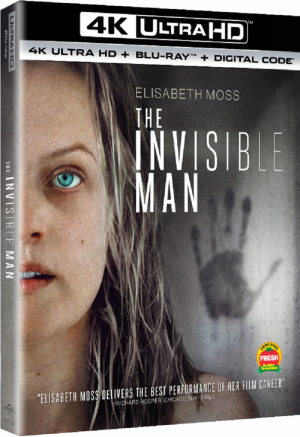REVIEW: Jaws 45th Anniversary Edition
 Summer has always been peak movie season and there certainly have been major releases before 1975. But a combination of elements came together in a perfect storm of entertainment that created something new: the summer blockbuster. You start with a stellar adaptation of Peter Benchley’s best-selling novel in the hands of a young, still-developing but promising director in Steven Spielberg, a strong cast anchored by Roy Scheider, Robert Shaw, and Richard Dreyfuss, and a fresh score from John Williams. Altogether, Jaws burst into the American consciousness. It rewrote the rules for Hollywood success, rules that only recently have been challenged.
Summer has always been peak movie season and there certainly have been major releases before 1975. But a combination of elements came together in a perfect storm of entertainment that created something new: the summer blockbuster. You start with a stellar adaptation of Peter Benchley’s best-selling novel in the hands of a young, still-developing but promising director in Steven Spielberg, a strong cast anchored by Roy Scheider, Robert Shaw, and Richard Dreyfuss, and a fresh score from John Williams. Altogether, Jaws burst into the American consciousness. It rewrote the rules for Hollywood success, rules that only recently have been challenged.
Universal Home Entertainment is releasing a 45th anniversary edition, coming to 4K Ultra HD for the first time, complete in a combo pack with Blu-ray and Digital HD. The limited-edition packaging includes a lenticular cover and a 48-page booklet with a fine overview.
I am among a handful of Americans left to have never seen the film before now. One of the first things I noticed was that the film luxuriates in al the little touches, the background conversations, leisurely aspects of American summer, and variety of types. We’re welcomed into the community of Amity, which could be Anywhere, USA. Then, once the horror is revealed, the focus shifts to the trio of unlikely allies.
Spielberg lets the tension build with the first few shark incidents while letting the scenes play out. The longer scenes and tight editing combine to draw you in, and keep you glued to your seats. Verna Fields was a brilliant editor, and her touch missed; while Williams, two years pre-Star Wars, reminded us of the importance of the score. Both earned Academy Awards for this picture.
While I mentioned the trio at the to of the cast, they are surrounded by a really strong support team led by Murray Hamilton, Carl Gottlieb (who co-wrote the script with Benchley), and Lorraine Gary. Scheider represents the audience, learning about the predator and coming to grips with the deadly threat, the everyman trying to do the right thing while dealing with the political and economic pressures brought on by the Mayor (Hamilton).
With Bruce the shark (the name given to the semi-successful mechanical version) as the real antagonist, Shaw’s Quint brings us to the darkness within the ocean and ourselves. His work was always strong and the 1970s was his heyday (The Strong, Jaws, Robin and Marion, The Taking of Pelham 1-2-3).
There is so much I knew about the film before sitting down with it, I was concerned it would spoil the experience. Not so, for there is much I never had seen before. There is obvious loving care taken the producing this new disc with a stellar 2160p/Dolby Vision UHD transfer. The first thing you notice is the grain, something immediately connoting age these days, but you quickly adjust and appreciate the clarity. This is a leap beyond the previous Blu-ray disc. It is accompanied by a fine Dolby Atmos soundtrack, letting you enjoy Williams’ work all over again. The DTS-HD Master Audio 2.0 track is equally good.
The 2012 special features are included here including The Making of Jaws (2:02:48), The Shark is Still Working: The Impact and Legacy of Jaws (1:41:06), Jaws: The Restoration (8:29), Deleted Scenes and Outtakes (13:33), From the Set (8:46), and Theatrical Trailer (3:15). The Blu-ray contains Storyboards, Production Photos, Marketing Jaws, and Jaws Phenomenon.
We are reminded again how producers Richard Zanuck and David Brown took a chance on Spielberg, against Universal’s instincts and scored beyond anyone’s imagination. With summer upon us, and new films hard to find, this is a good time to revisit the one that started a trend.






































